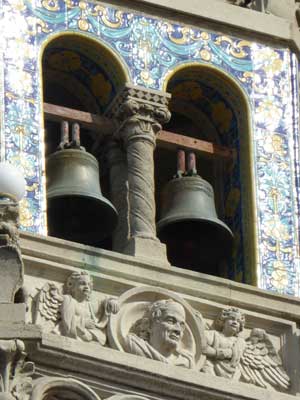HEARST CASTLE & PCH (Day 7 - part 3)
We finally arrived at the castle... Casa Grande (or Big House). Its construction began in 1922 and continued until 1947, when William left. Covering 68,500 square feet, it contains 115 rooms, including 38 bedrooms, over 40 bathrooms, a theatre, and a beauty salon.



The four sculptures at this fountain are the oldest works of art at the estate. They date back from the New Kingdom of Egypt (c. 1550 - 1070 BC).

Sekhmet (meaning powerful one) was the daughter of Ra (the Egyptian sun god) and has the body of a woman and the head of a lioness.


The main western facade was inspired by a gateway in Seville (Spain). The two bell towers are modeled after those of the church of Santa Maria la Mayor in Ronda (Spain).

On the main door is a coat of arms. Above it is a hat called a galero with six tassels on each side. This was originally a pilgrim's hat like a sombrero. Its color and the number of tassels varied based on the rank of the cleric: red with 15 tassels was for cardinals, green with 10 tassels for archbishops, etc. This was probably for a bishop or an abbot, which has 6 tassels. Although it could just be because they thought it looked cool.


The towers...


... with its bells


Carvings


Spanish Wild Man sculptures
By the end of the Middle Ages, "Wild People" were those who lived outdoors in caves or the remote forests. They were strong, skilled hunters, often pictured wielding a large club. With long wild, unkempt hair, they were the antithesis of "civilization" and broke all sorts of Christian morals.

















Entering the castle by a small side door
return • continue

